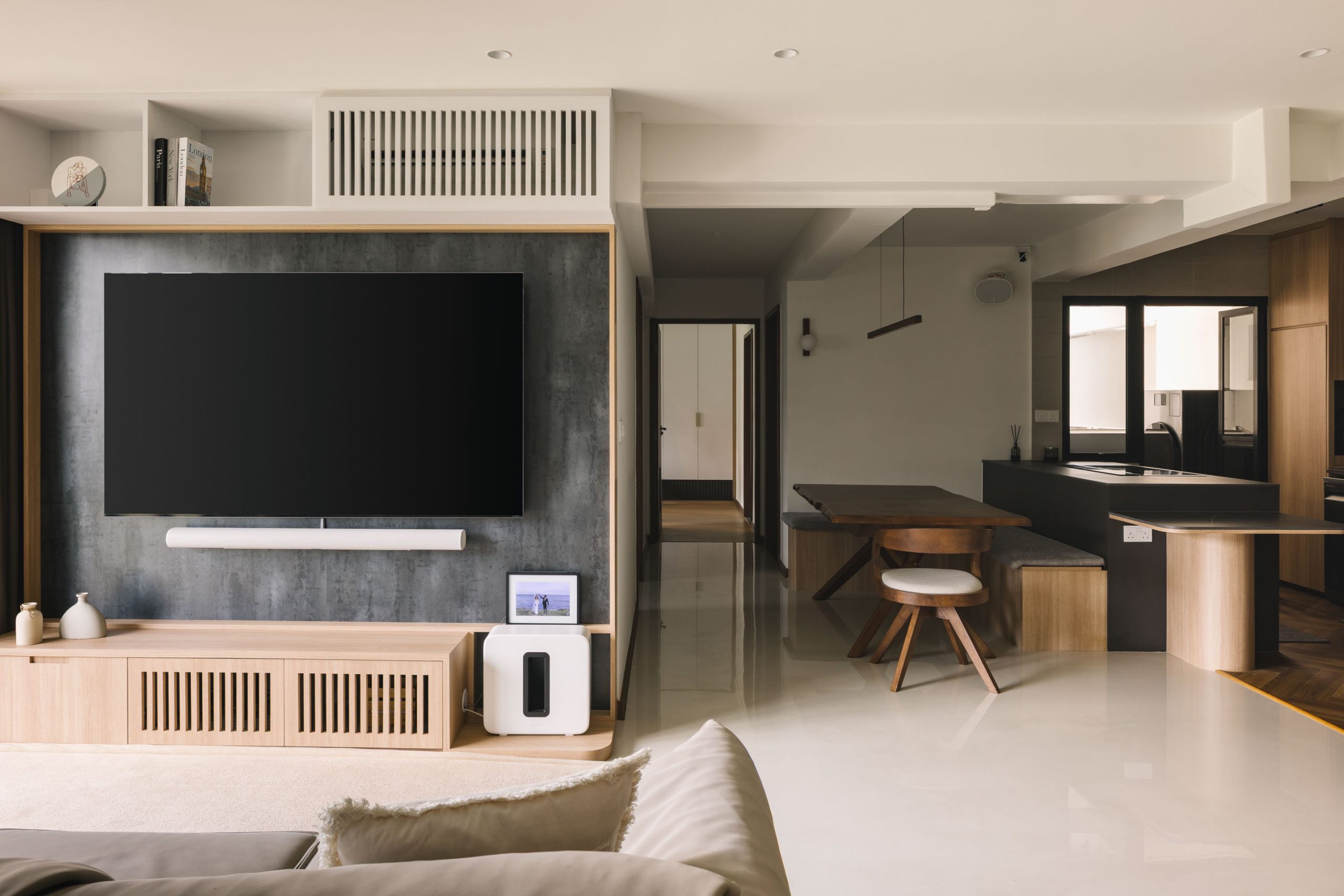Hacking Walls in HDB Renovation Singapore: What’s Permitted & What’s Not

Achieving an open-concept living space is a common aspiration in modern interior design, particularly for homeowners in Singapore planning an HDB renovation. Hacking walls can dramatically transform a home, but this ambition is met with strict regulations designed to protect the building’s integrity. For any home renovation project, navigating the HDB’s rules is non-negotiable.
This essential guide, created by The Interior Lab, clarifies what is permitted and what is forbidden, ensuring your design vision is realised with both elegance and structural safety.
The Foundational Principle: Structural vs. Non-Structural Walls
Before any demolition or renovation works can be considered, one must understand the fundamental difference between the two primary types of walls in any building:
- Structural Walls: These are the load-bearing pillars of the building, integral to the HDB block’s framework. Hacking a structural wall compromises the entire structure’s stability and is unequivocally prohibited.
- Non-Structural Walls: These are partition walls that serve solely to demarcate spaces, such as separating bedrooms or a bathroom. These are the only walls that may be considered for removal, and even then, only with the correct permits and professional oversight from a qualified renovation contractor.
Identifying these walls requires more than a visual inspection; it demands a careful review of the HDB-provided floor plans and the expert assessment of a professional interior designer or architect.
Walls That Are Strictly Off-Limits for Demolition
To ensure absolute clarity, the HDB has a clear list of components that must never be altered. Attempting to do so can result in severe penalties, including a costly order to reinstate the original structure. These prohibitions, as outlined in the official HDB guidelines, include:
- All structural walls, columns, and beams.
- Staircases in Executive Maisonettes.
- Walls concealing essential services like plumbing and wiring.
- Exterior walls and facade elements.
The Regulated Renovation Process for Hacking Permitted Walls
If your design plan involves removing a non-structural wall, you must follow a meticulous, multi-step renovation process:
1. Choose an Expert Interior Design Firm and Registered Contractor
The first step is to engage a reputable ID firm. While a renovation portal or interior design marketplace might offer initial renovation ideas, a dedicated firm provides personalised expertise crucial for complex projects. An ID firm that is an approved HDB Registered Renovation Contractor will ensure that only certified workers are engaged for hacking works. This also means they can handle all the necessary HDB permit applications for you, ensuring a smooth and compliant renovation.
2. Submit Floor Plans for HDB Approval
This is a critical due diligence step. Your appointed contractor must submit detailed technical drawings that clearly mark the walls intended for demolition. The HDB meticulously reviews these plans against its master structural blueprints to verify that no load-bearing components are affected. This formal submission serves as the official record of your proposed alterations and is the first checkpoint in the approval chain.
3. Obtain the HDB Hacking Permit
This permit is the final, official authorisation to begin demolition. It is only issued after the HDB has approved the submitted plans and the PE endorsement, if required, has been obtained. The permit is more than just a piece of paper; it is a legal document that stipulates critical conditions, including the approved working hours (typically 9:00 am to 5:00 pm on weekdays) to minimise noise disruption. Work cannot legally commence until this permit is granted and displayed at the flat.
4. Await Approval
Do not start any work until you have received the official Renovation Permit from HDB. The permit will outline the approved works and the conditions to be followed.
Conclusion: Transforming Your Home with Confidence
Hacking walls in an HDB flat can unlock incredible spatial potential, but it is a process governed by strict rules. Successfully distinguishing between structural and non-structural walls and adhering to the mandatory permit process, from plan submission to PE endorsements, is crucial for a safe and legal renovation.
At The Interior Lab, our expertise lies in managing these technical and regulatory complexities for you. We ensure your renovation in Singapore is not only visually stunning but also executed with the highest standards of safety and professionalism, allowing you to focus on the vision for your dream home.
Ready to transform your space with confidence? Contact The Interior Lab today to schedule a consultation and receive a quote to start creating the home of your dreams.
CONSULT OUR DESIGNER
-
16 December 2025 DESIGN INSPIRATIONPRE-RENOVATIONTIPS & GUIDES
Low-Maintenance Interior Design Ideas For Busy Singaporeans
-
4 December 2025 TIPS & GUIDES
HDB Interior Design Rules You Might Be Breaking Without Knowing (And How to Fix Them)
-
4 December 2025 TIPS & GUIDES
Selecting an Interior Designer for Luxury Interior Design
-
4 December 2025 TIPS & GUIDES
6 Essential Functional Considerations in Renovation Interior Design You Don’t Want to Overlook
-
4 December 2025 TIPS & GUIDES
Top 10 Ways to Personalise a Templated Condo Interior Design
-
11 November 2025 TIPS & GUIDES
Future-Proofing Your Home: Designing for the Years Ahead

